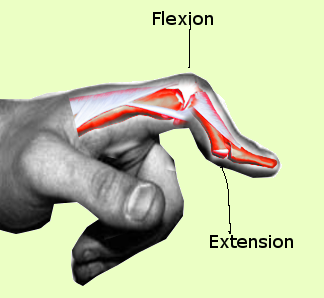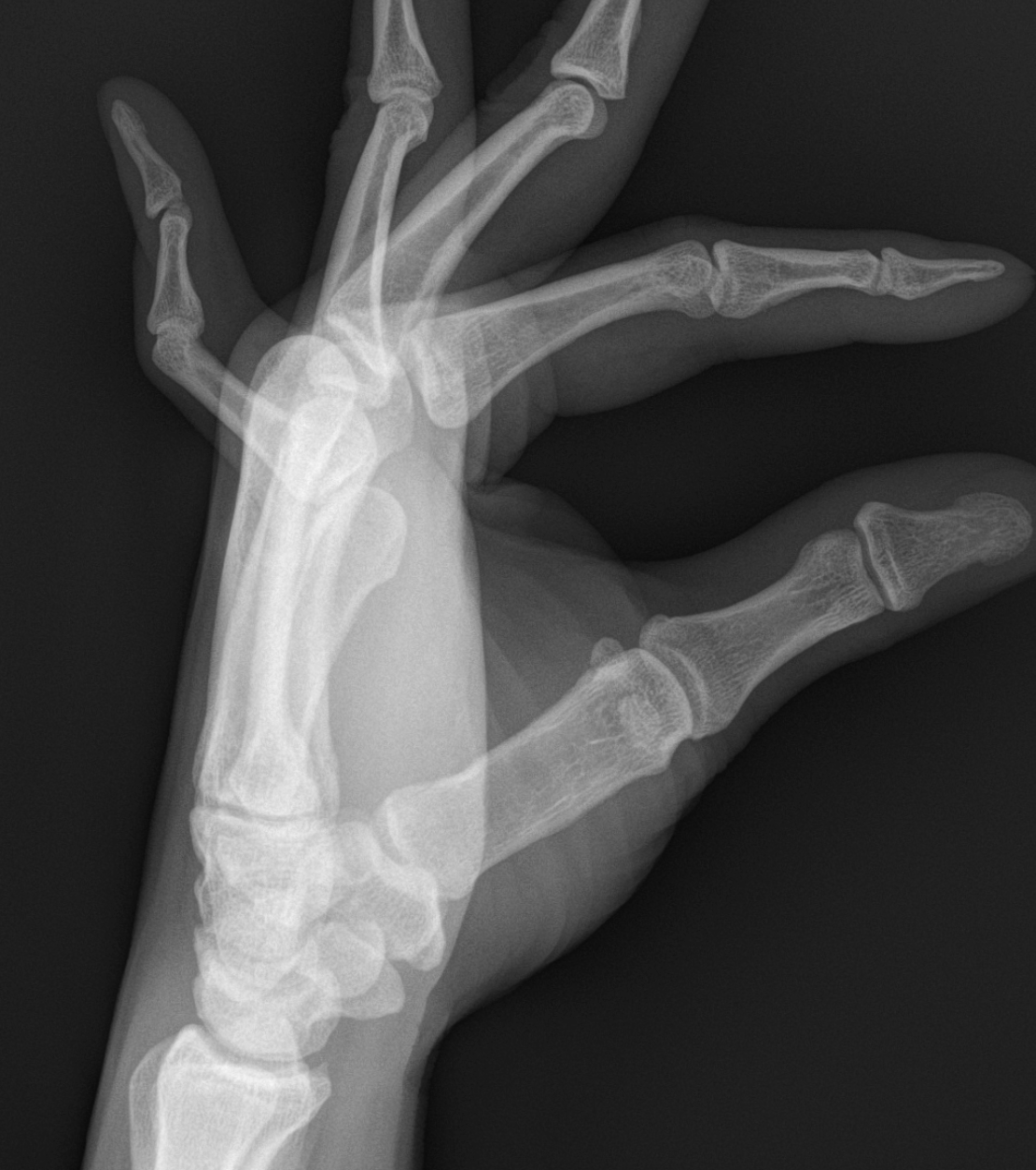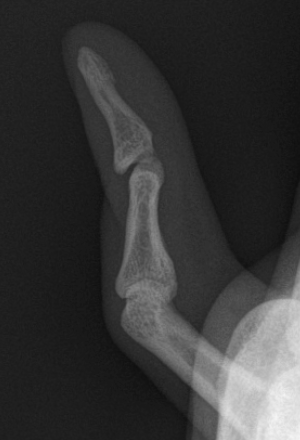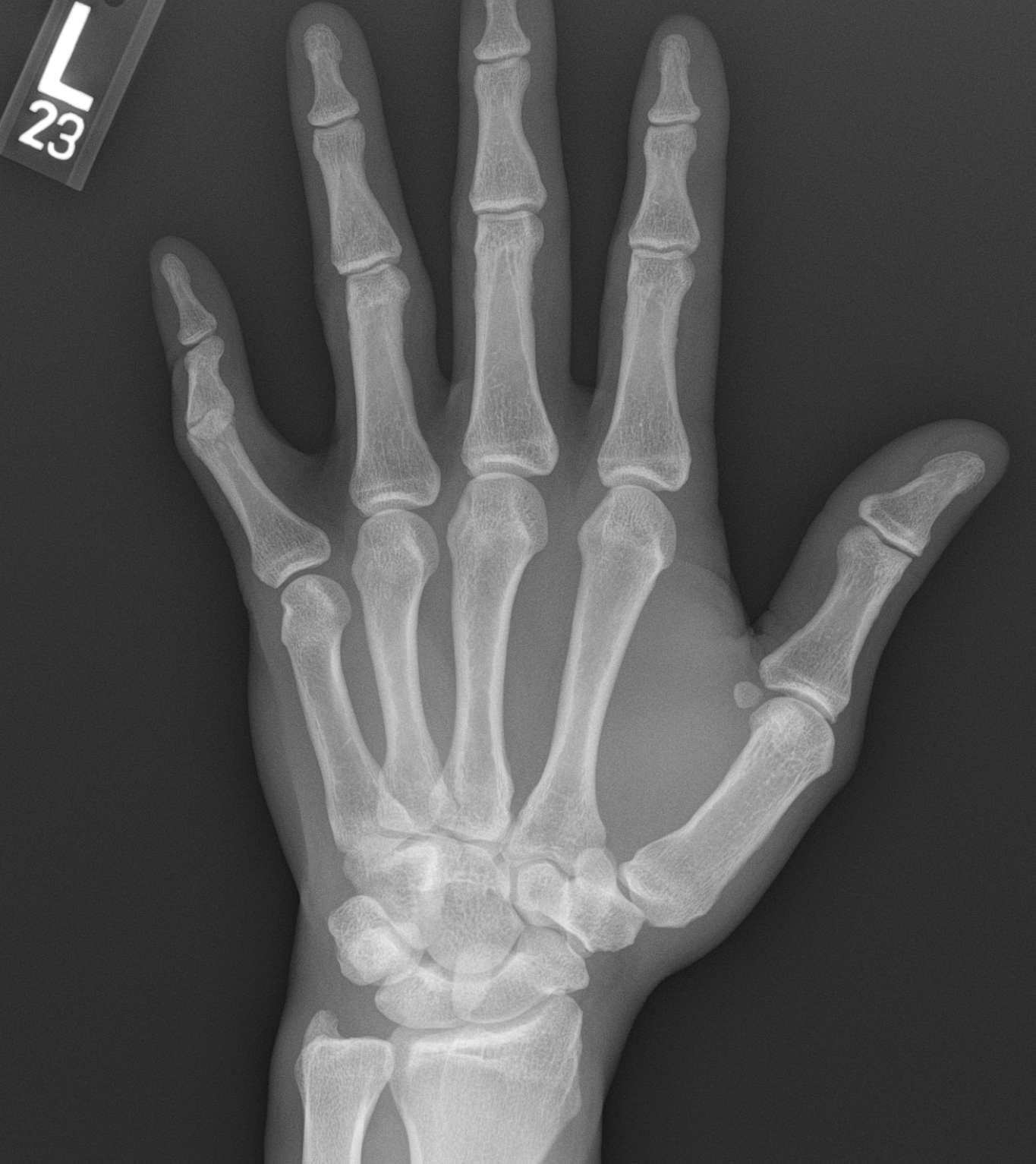[2]
Boussakri H, Azarkane M, Dahmani O, Elidrissi M, Shimi M, Elibrahimi A, Elmrini A. Unusual combination of lesions of the traumatic hand: closed central slip laceration of the extensor and interphalangeal thumb joint's dislocation (a case report). The Pan African medical journal. 2014:18():230. doi: 10.11604/pamj.2014.18.230.3240. Epub 2014 Jul 18
[PubMed PMID: 25426188]
Level 3 (low-level) evidence
[3]
Sabapathy SR, Bajantri B, Bharathi RR. Management of post burn hand deformities. Indian journal of plastic surgery : official publication of the Association of Plastic Surgeons of India. 2010 Sep:43(Suppl):S72-9. doi: 10.4103/0970-0358.70727. Epub
[PubMed PMID: 21321661]
[4]
Vedel PN, Tranum-Jensen J, Dahlin LB, Brogren E, Søe NH. [Deformities of the finger joints]. Ugeskrift for laeger. 2017 Nov 27:179(48):. pii: V04170324. Epub
[PubMed PMID: 29208202]
[5]
Grau L, Baydoun H, Chen K, Sankary ST, Amirouche F, Gonzalez MH. Biomechanics of the Acute Boutonniere Deformity. The Journal of hand surgery. 2018 Jan:43(1):80.e1-80.e6. doi: 10.1016/j.jhsa.2017.07.011. Epub 2017 Sep 7
[PubMed PMID: 28888567]
[6]
Carruthers KH, Skie M, Jain M. Jam Injuries of the Finger: Diagnosis and Management of Injuries to the Interphalangeal Joints Across Multiple Sports and Levels of Experience. Sports health. 2016 Sep:8(5):469-78. doi: 10.1177/1941738116658643. Epub 2016 Jul 15
[PubMed PMID: 27421747]
[7]
Sood A, Kotamarti VS, Granick MS. Boutonnière Deformity Following Volar Proximal Interphalangeal Joint Dislocation. Eplasty. 2016:16():ic25
[PubMed PMID: 27347279]
[8]
Bai RJ, Zhang HB, Zhan HL, Qian ZH, Wang NL, Liu Y, Li WT, Yin YM. Sports Injury-Related Fingers and Thumb Deformity Due to Tendon or Ligament Rupture. Chinese medical journal. 2018 May 5:131(9):1051-1058. doi: 10.4103/0366-6999.230721. Epub
[PubMed PMID: 29692376]
Level 2 (mid-level) evidence
[10]
Sharif K, Sharif A, Jumah F, Oskouian R, Tubbs RS. Rheumatoid arthritis in review: Clinical, anatomical, cellular and molecular points of view. Clinical anatomy (New York, N.Y.). 2018 Mar:31(2):216-223. doi: 10.1002/ca.22980. Epub 2017 Oct 27
[PubMed PMID: 28833647]
[11]
McCue FC, Honner R, Johnson MC, Gieck JH. Athletic injuries of the proximal interphalangeal joint requiring surgical treatment. The Journal of bone and joint surgery. American volume. 1970 Jul:52(5):937-56
[PubMed PMID: 5479483]
[12]
Fox PM, Chang J. Treating the Proximal Interphalangeal Joint in Swan Neck and Boutonniere Deformities. Hand clinics. 2018 May:34(2):167-176. doi: 10.1016/j.hcl.2017.12.006. Epub
[PubMed PMID: 29625636]
[13]
Kamnerdnakta S, Huetteman HE, Chung KC. Complications of Proximal Interphalangeal Joint Injuries: Prevention and Treatment. Hand clinics. 2018 May:34(2):267-288. doi: 10.1016/j.hcl.2017.12.014. Epub
[PubMed PMID: 29625645]
[14]
Hirth MJ, Howell JW, O'Brien L. Relative motion orthoses in the management of various hand conditions: A scoping review. Journal of hand therapy : official journal of the American Society of Hand Therapists. 2016 Oct-Dec:29(4):405-432. doi: 10.1016/j.jht.2016.07.001. Epub 2016 Oct 25
[PubMed PMID: 27793417]
Level 2 (mid-level) evidence
[15]
McKeon KE, Lee DH. Posttraumatic Boutonnière and Swan Neck Deformities. The Journal of the American Academy of Orthopaedic Surgeons. 2015 Oct:23(10):623-32. doi: 10.5435/JAAOS-D-14-00272. Epub 2015 Aug 28
[PubMed PMID: 26320165]




